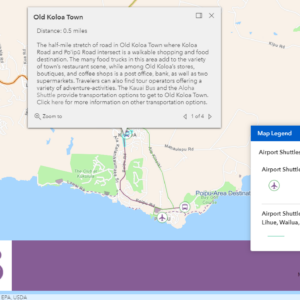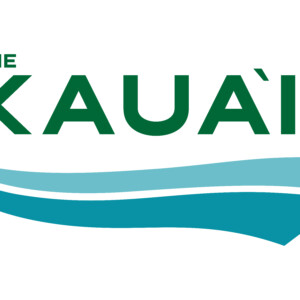This is the second of a three-part series covering analyses that were part of the Energy Transition Initiatives Partnership Project which was a Department of Energy funded program in the form of technical assistance for the County of Kauai.
Transportation Preference Survey Analysis Summary –
The County of Kauai posted an online survey between July to October 2022 to collect feedback from residents and visitors on their transportation preferences and thoughts about alternative mobility options. The objective was to understand why people chose the transportation mode that they did, such as a car, and what would make them change to something different. Questions were customized to the distinct travel needs of both audiences. There were 1,396 survey responses collected, with 1,033 complete responses, among which 764 respondents were residents and the remaining 269 being visitors.
To ensure maximum reach and response, the survey was distributed across multiple channels: direct invite via word of mouth and email, the Kauai County Facebook page, a press release on the County website, community events, hotels, and posters on The Lihue Airport.
Motivation plays a key role in the desirability of alternative transportation. Results show 32.34% of residents favor driving because it is the most efficient option to complete multiple errands/trips in a day, but a larger majority choose to drive because there isn’t a bus/shuttle stop near their home, they feel unsafe taking public transit, and there is a lack of alternatives. Favorability increases as other modes of transportation perform adjacent to or better in terms of cost and time than driving a personal vehicle. Socio-economic aspects like income and housing may also factor in the level of transit use.
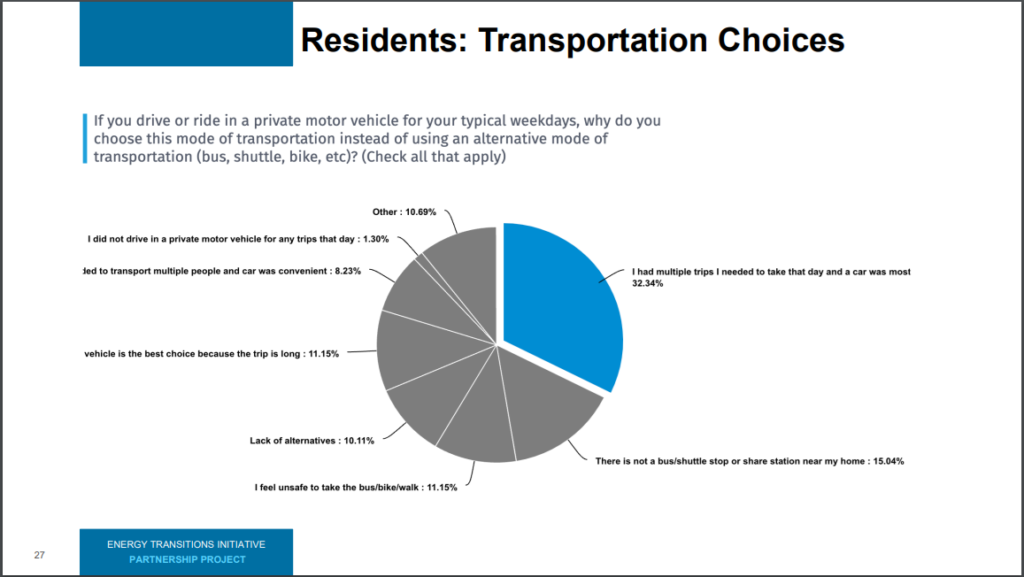
Although the majority of visitors do not use the bus, shuttle, ride-hail services, Turo, bikes, or walking as a means of transportation, there is opportunity to expand on the 20-35% of the survey respondent population who sometimes use the bus, shuttle, ride-hail services, and bikes, as only 49.59% of the survey respondents renting a car drove it every day, and out of the 74% of visitors who tend to rent a car, more than 50% of the group researched other transportation options first. Of the survey group that did not research other options, 46.43% said they did not know there were other options and 33.93% found the other options to be inconvenient.
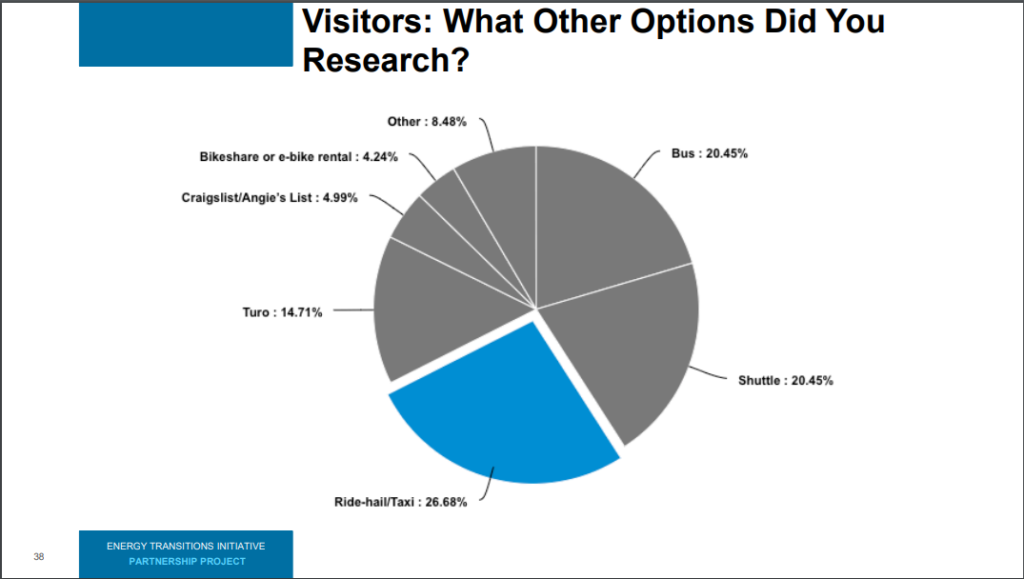
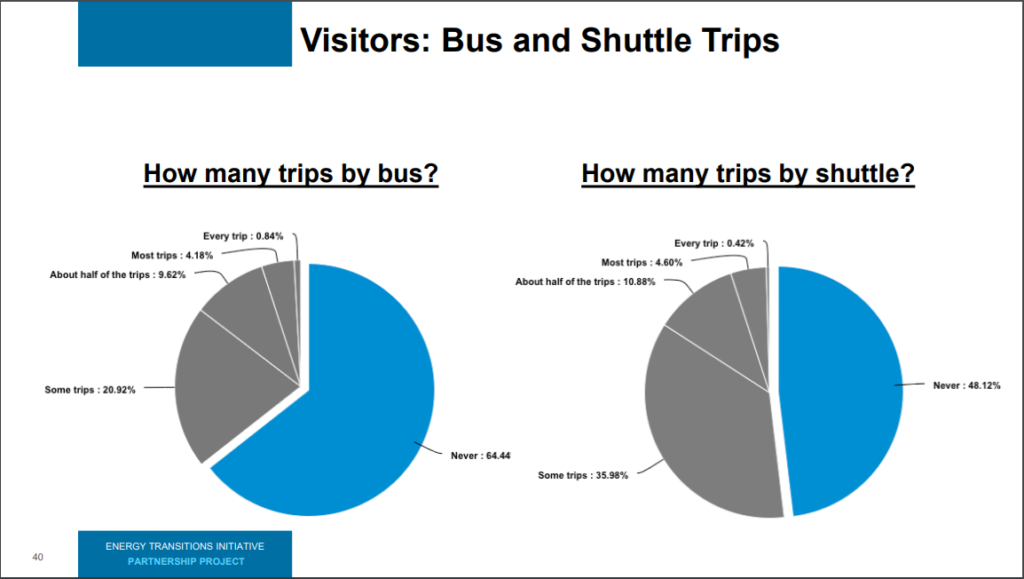
When it comes to alternative transportation options, over half of visitors are willing to pay $2-$5 for bike/e-bike share and AV shuttle service. For car share, it is worth noting that while the first majority of respondents at 26.02% are willing to pay $5, the following majority at 18.42% say they will never use this option. Residents were asked the price they would pay for each alternative transportation option with intended use for a typical commute, shopping trip, and leisure trip. Against all three trip types, use of an AV shuttle had the widest range of prices residents would pay, indicating its high favorability. This was followed by car share and bike/e-bike share last. Over half of responding residents indicate they would use an AV shuttle for all three types of trips; nearly half would use car share for leisure and shopping trips and over half would use car share for their typical commute.
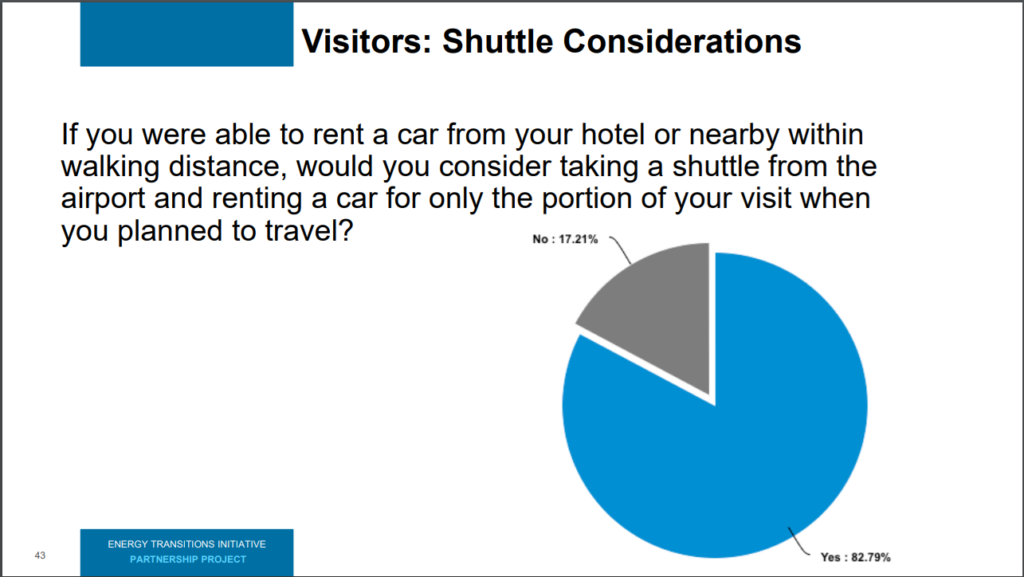
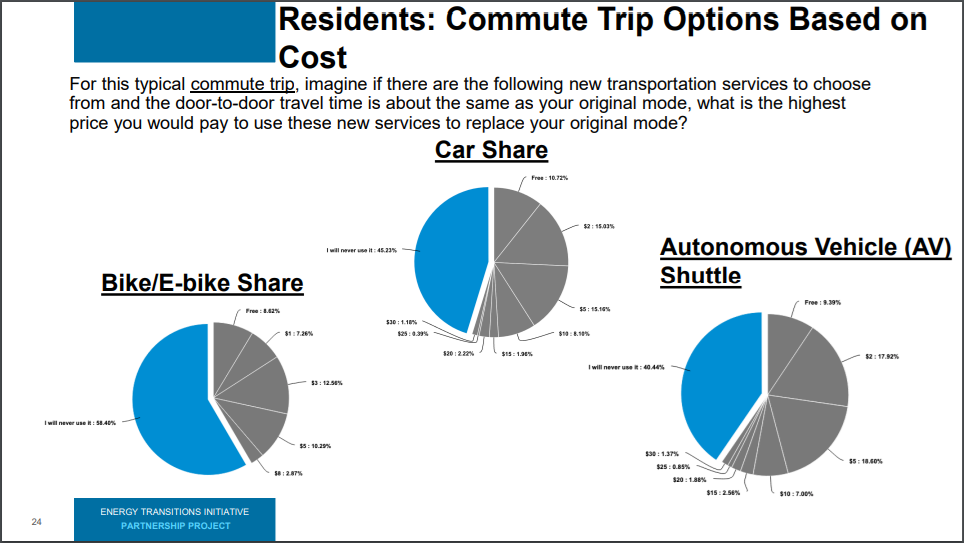

Regarding financial incentives to reduce traffic congestion via the number of cars on the road, parking fees and hotel discounts show potential in being a consideration to influence transit choice. If a parking fee at an intended site visit of $20 is introduced, 33.63% of visitor respondents would pay $10 to use an AV shuttle with the following two majority groups willing to pay $15 and $20 respectively, accounting for a total of 64% of visitor responses. Hotel room discounts also garner a positive response across the board.
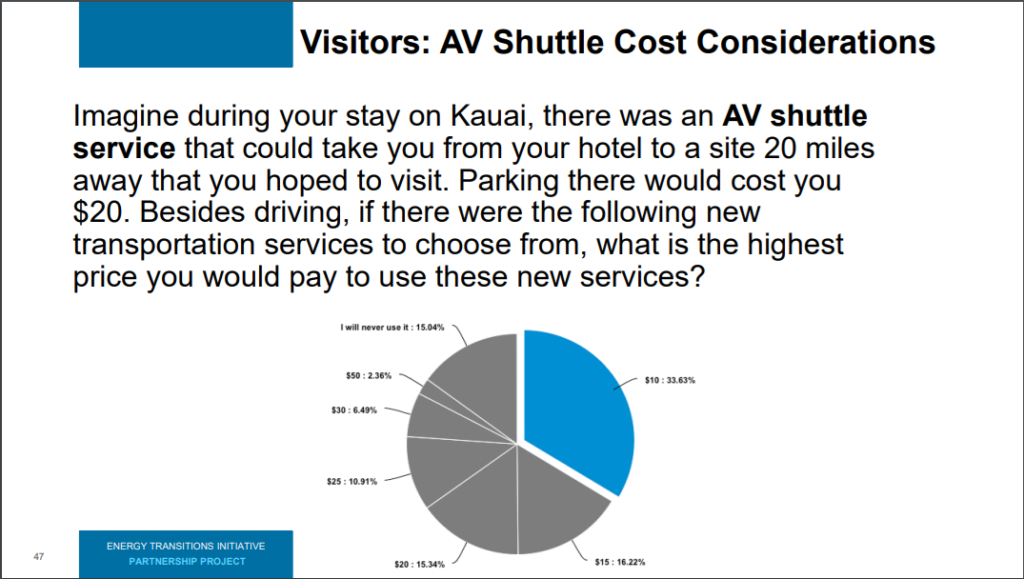
Driving alone and carpool is the majority choice of residents for commuting, leisure, or shopping activities while visitors tend to rent a car due to the convenience of being able to visit more locations in a day and lack of knowledge about other transit options. Survey respondent answers show that the current transit system is not robust enough to compete with personal vehicles, but introducing other options to build a multi-modal sustainable mobility system on the island has potential.
For more information regarding the methodology, analyses, and findings, the published study can be found here – https://kauaiforward.com/wp-content/uploads/2024/09/Deliverable-6-Task-2-Kauai-transportation-preference-survey-analysis.pdf
-Clarissa Hsi, Climate Communications VISTA, Office of Economic Development, County of Kauai

